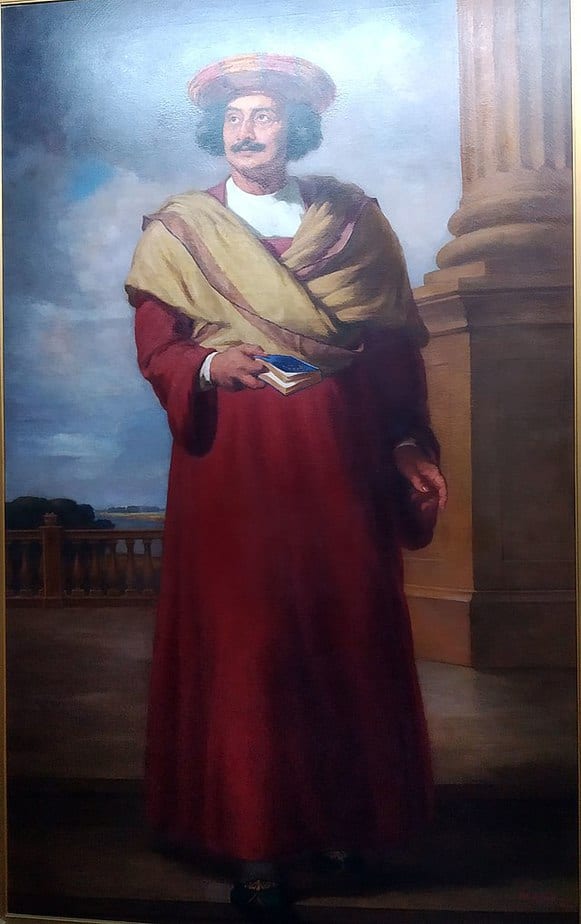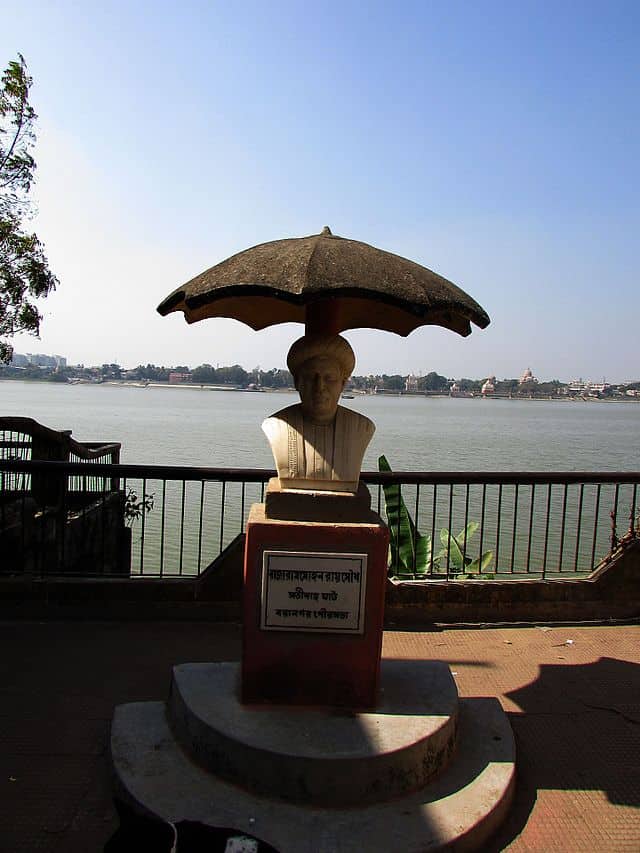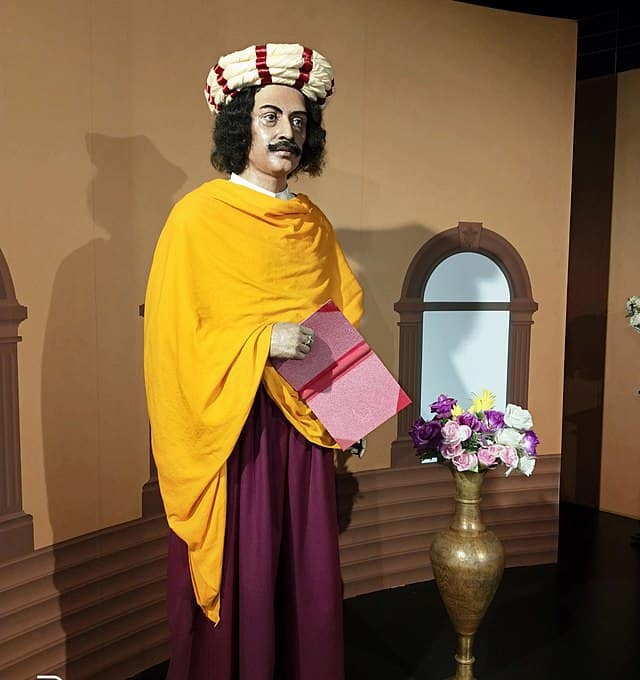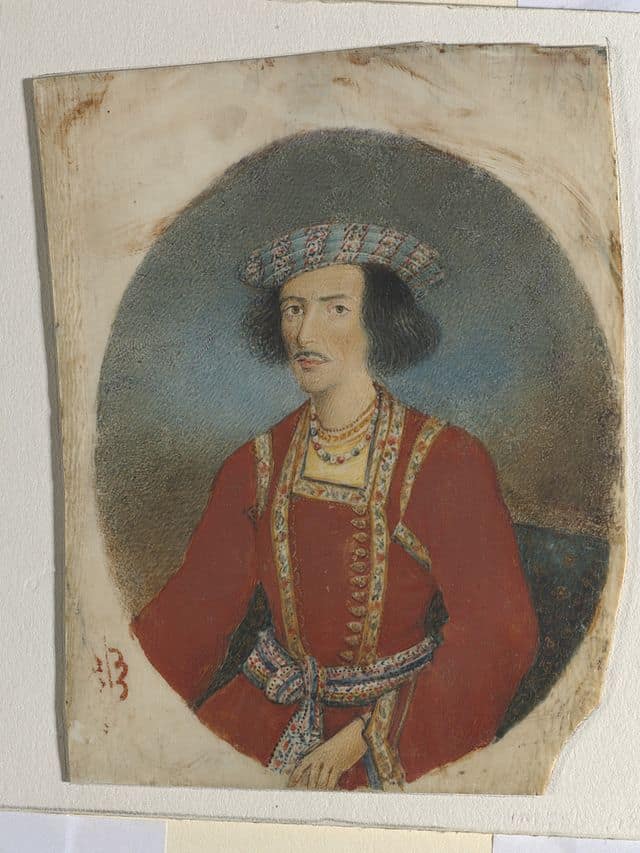
Raja Ram Mohan Roy by Sufe – Wikimedia Commons
10 Interesting Facts about Raja Rammohun Roy
Raja Rammohun Roy was an Indian reformer who was one of the founders of the Brahmo Sabha in 1828. He was the precursor of the Brahmo Samaj, a social-religious reform movement in the Indian subcontinent. He was given the title of Raja by Akbar II, the Mughal emperor.
Raja Roy’s influence was apparent in the fields of politics, public administration, education, and religion. He was known for his efforts to abolish the practices of sati and child marriage. Here are 10 interesting facts about Raja Rammohun Roy.
1. Rammohun Roy is considered to be the “Father of the Bengal Renaissance” by many historians
The Bengal Renaissance was a cultural, social, intellectual, and artistic movement that took place in the Bengal region of the British Raj, from the late 18th century to the early 20th century. Historians have traced the beginnings of the movement to the victory of the British East India Company at the 1757 Battle of Plassey. Additionally, the works of reformer Raja Rammohan Roy, considered the “Father of the Bengal Renaissance,” who was born in 1772.
2. Roy’s impact on modern Indian history was his revival of ethical principles

Raja Ram Mohan Roy Memorial adjacent to Satidaha Ghat by Rounik Ghosh – Wikimedia Commons
Raja Roy revived ethical principles of the Vedanta school of philosophy as found in the Upanishads. He preached the unity of God, made early translations of Vedic scriptures into English, co-founded the Calcutta Unitarian Society, and founded the Brahma Samaj.
The Brahma Samaj played a major role in reforming and modernizing Indian society. He successfully campaigned against sati, the practice of burning widows. He sought to integrate Western culture with the best features of his own country’s traditions.
3. Roy acted as a political agitator whilst employed by the East India Company
The East India Company was draining money from India at a rate of three million pounds a year by 1838. The East India Company was draining money from India at a rate of three million pounds a year by 1838.
He estimated that around one-half of all total revenue collected in India was sent out to England, leaving India, with a considerably larger population, to use the remaining money to maintain social well-being. Roy saw this and believed that the unrestricted settlement of Europeans in India governing under free trade would help ease the economic drain crisis.
4. Rammohun publicly declared that he would emigrate from the British Empire if Parliament failed to pass the Reform Bill

Statue of Raja RamMohan Roy – Wikimedia Commons
In 1830, Ram Mohan Roy traveled to the United Kingdom as an ambassador of the Mughal Empire to ensure that Lord William Bentinck’s Bengal Sati Regulation, 1829 banning the practice of Sati was not overturned. In addition, Roy petitioned the King to increase the Mughal Emperor’s allowance and perquisites.
He was successful in persuading the British government to increase the stipend of the Mughal Emperor by £30,000. He also visited France. While in England, he embarked on cultural exchanges, meeting with members of Parliament and publishing books on Indian economics and law.
5. The religious reforms of Roy were very radical
The religious reforms of Roy contained in some beliefs of the Brahmo Samaj expounded by Rajnarayan Basu. Brahmo Samaj is the societal component of Brahmoism, which began as a monotheistic reformist movement of the Hindu religion that appeared during the Bengal Renaissance.
Brahmo Samaj believe that the most fundamental doctrines of Brahmoism are the basis of every religion followed by a man. Brahmo Samaj believe in the existence of One Supreme God a God, endowed with a distinct personality & moral attributes equal to His nature, and intelligence befitting the Author and Preserver of the Universe,” and worships Him alone.
Roy’s beliefs were derived from a combination of monastic elements of Hinduism, Islam, eighteenth-century Deism, Unitarianism, and the ideas of the Freemasons.
6. Roy founded the Unitarian Community to fight the social evils in India

Bust portrait of the Hindu reformer Ram Mohan Roy – Wikimedia Commons
Roy founded the Atmiya Sabha and the Unitarian Community to fight the social evils, and propagate social and educational reforms in India.
He was the man who fought against superstitions, a pioneer in Indian education, and a trendsetter in Bengali Prose and the Indian press.
7. Rammohun objected to polygamy and child marriages
Roy’s experience working with the British government taught him that Hindu traditions were often not credible or respected by western standards and this no doubt affected his religious reforms. He wanted to legitimize Hindu traditions to his European acquaintances by proving that superstitious practices which deform the Hindu religion have nothing to do with the pure spirit of its dictates.
The superstitious practices, to which Ram Mohan Roy objected, included sati, caste rigidity, polygamy, and child marriages. These practices were often the reasons British officials claimed moral superiority over the Indian nation. Ram Mohan Roy’s ideas of religion actively sought to create a fair and just society by implementing humanitarian practices similar to the Christian ideals professed by the British and thus seeking to legitimize Hinduism in the eyes of the Christian world.
8. Roy believed education to be an implement for social reform

Portrait of Raja Ram Mohun Roy by Rembrandt Peale – Wikimedia Commons
In 1817, in collaboration with David Hare, he set up the Hindu College at Calcutta. In 1822, Roy found the Anglo-Hindu school, followed four years later in 1826 by the Vedanta College; where he insisted that his teachings of monotheistic doctrines be incorporated with a modern, western curriculum.
In 1830, he helped Rev. Alexander Duff in establishing the General Assembly’s Institution, by providing him with the venue vacated by Brahma Sabha and getting the first batch of students.
9. Roy’s commitment to English education and thought sparked debate between Mahatma Gandhi and Rabindranath Tagore
Gandhi, objecting to Roy’s devotion to English education and thought, characterized him as a pygmy. Tagore, whose grandfather had commissioned Roy’s mausoleum in Bristol, wrote a letter rejecting Gandhi’s view, saying Roy had the full inheritance of Indian wisdom.
He was never a schoolboy of the West, and therefore had the dignity to be a friend of the West. Gandhi later contrasted his own cultural pluralism with the fault he saw in Roy’s.
10. A pedestrian path at Stapleton has been named Rajah Rammohun Walk
There is a 1933 Brahmo plaque on the outside west wall of Stapleton Grove, and his first burial place in the garden is marked by railings and a granite memorial stone.
His tomb and chattri at Arnos Vale are listed as a Grade II historic site by English Heritage and attract many visitors today
Planning a trip to Paris ? Get ready !
These are Amazon’s best-selling travel products that you may need for coming to Paris.
Bookstore
- The best travel book : Rick Steves – Paris 2023 – Learn more here
- Fodor’s Paris 2024 – Learn more here
Travel Gear
- Venture Pal Lightweight Backpack – Learn more here
- Samsonite Winfield 2 28″ Luggage – Learn more here
- Swig Savvy’s Stainless Steel Insulated Water Bottle – Learn more here
Check Amazon’s best-seller list for the most popular travel accessories. We sometimes read this list just to find out what new travel products people are buying.









